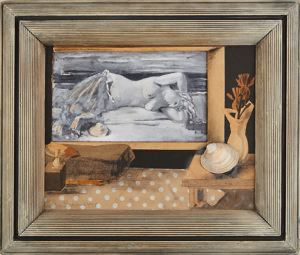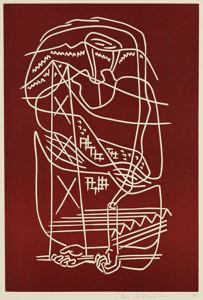| Showing 75 of 194 |
| FILTER RESULTS | × Close |

 by Artist (170)
by Artist (170)
Aaron Morse
1
Adaline Kent
1
Agnes Pelton
1
Ann Preston
1
Arlo Acton
1
Ben Berlin
1
Ben Sakoguchi
1
Ben Talbert
1
Billy Al Bengston
1
Birger Sandzen
1
Bob Flanagan
1
Bruce Conner
1
Cameron
1
Carlos Almaraz
1
Carole Caroompas
1
Channa Horwitz
1
Charles Benefiel
1
Charles Christopher Hill
1
Charles Gaines
1
Charles Garabedian
1
Charles Howard
1
Clay Spohn
1
Clayton S. Price
1
David Ireland
1
Deborah Remington
1
Derek Boshier
13
Don Martin
1
Don Potts
1
Don Suggs
1
Dorr Bothwell
1
Doug Edge
1
Douglas Huebler
1
Edward Biberman
1
Edward Corbett
1
Edward Ruscha
1
Edward Weston
1
Edwin Mieczkowski
1
Elise Seeds
1
Ellwood Graham
1
Emil James Bisttram
1
Enrique Chagoya
1
Eric Orr
1
Fletcher Benton
1
Forrest Clemenger Bess
1
Frank Kunishige
1
Frank Lobdell
1
Fred Lonidier
1
Fred Mason
1
Fredrick R. Archer
1
George Herms
1
George Stillman
1
George Stone
1
Ger Van Elk
1
Gordon Onslow-Ford
1
Gordon Wagner
1
Guy de Cointet
3
Harold Cohen
1
Harry Kramer
1
Hassel Smith
1
Hayward King
1
Helen Lundeberg
1
Helen Mayer Harrison
3
Henrietta Shore
1
Hilaire Hiler
1
Horace Clifford Westermann
1
Howard Fried
1
Irving Norman
1
Italo Scanga
3
Jack Goldstein
1
James Kelly
1
James Melchert
1
Jay DeFeo
1
Jean Lowe
1
Jean-Pierre Hebert
1
Jeremy Anderson
1
Jess Collins
2
Jim Eller
1
Jim Isermann
1
Jim Pomeroy
1
Jim Starrett
1
Jo Ann Callis
1
Joe Ray
1
John Baldessari
1
John Divola
5
John Ferren
1
John Knight
1
John Langley Howard
1
John Mason
1
John Outterbridge
1
John Sonsini
1
John Valadez
1
Joyce Treiman
1
Jules Engel
1
June Wayne
1
Karen Carson
1
Karl Benjamin
1
Károly Fülöp
1
Kaz Oshiro
1
Kim MacConnel
1
Knud Merrild
1
Kyo Koike
1
Lari Pittman
1
Lawren S. Harris
1
Lee Mullican
2
Leo Valledor
1
Leslie Kerr
1
Llyn Foulkes
1
Lorser Feitelson
1
Lucien Labaudt
1
M.A. Peers
1
Madge Knight
1
Manny Farber
1
Manuel Neri
1
Margaret Nielsen
1
Martin Kersels
1
Mary Henry
1
Maurice G. Logan
1
Max Cole
1
Mel Henderson
1
Michael C. McMillen
1
Mitchell Syrop
1
Nancy Buchanan
1
Nancy Jackson
1
Nicholas Brigante
1
Noah Purifoy
1
Norman Stiegelmeyer
1
Norman Zammitt
1
Oskar Fischinger
1
Pat O'Neill
1
Patrick Nickell
1
Paul DeMarinis
1
Paul Harris
1
Paul Kos
1
Peter Krasnow
1
Peter Saul
1
Philip Zimmerman
1
Reuben Kadish
1
Richard Bowman
1
Richard H. Pettibone
1
Rico Lebrun
1
Robert Boardman Howard
1
Robert Comings
1
Robert Cumming
1
Robert Irwin
1
Robert McChesney
1
Robert Ormerod Preusser
1
Robert Walker
1
Roger Brown
1
Roland Reiss
1
Ron Miyashiro
1
Roy De Forest
1
Russel Baldwin
1
Ruth Asawa
1
Scott Grieger
1
Selden Conner Gile
1
Seymour Locks
1
Sidney Gordin
1
Sister Mary Corita Kent
1
Sonia Gechtoff
1
Sush Machida Gaikotsu
1
Takako Yamaguchi
1
Terry Fox
1
Terry Schoonhoven
1
Tom Marioni
1
Tony DeLap
1
Trenton Doyle Hancock
1
Trimpin
1
Wally Bill Hedrick
1
William Leavitt
1
Wolfgang Paalen
1




